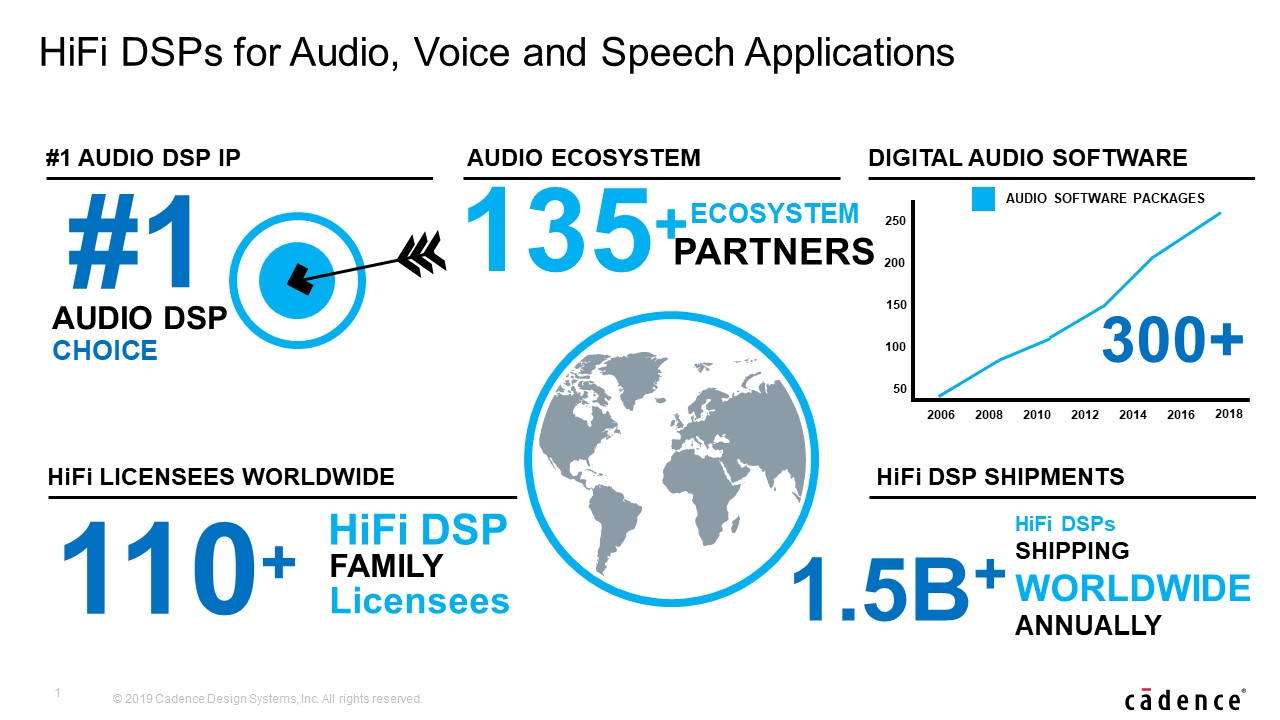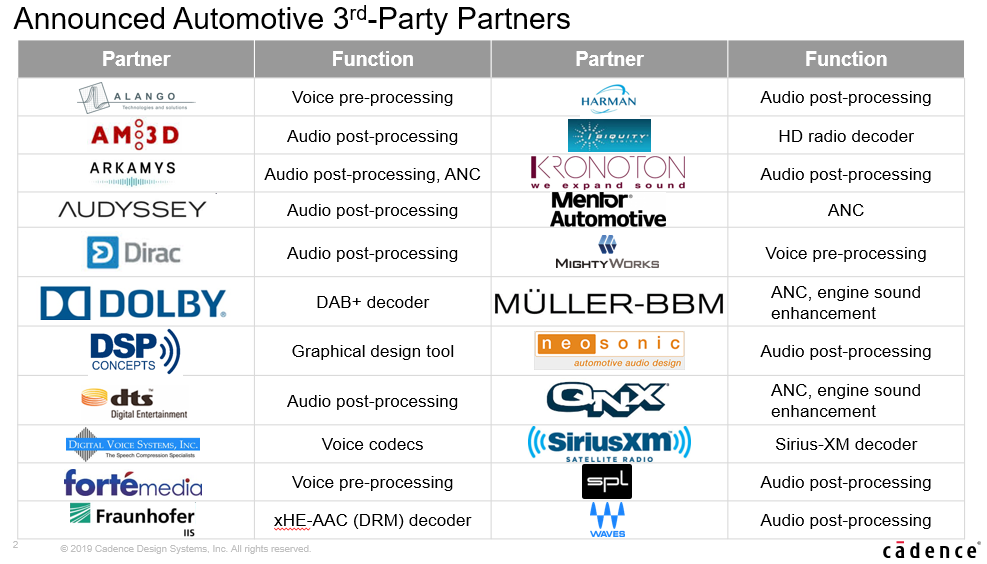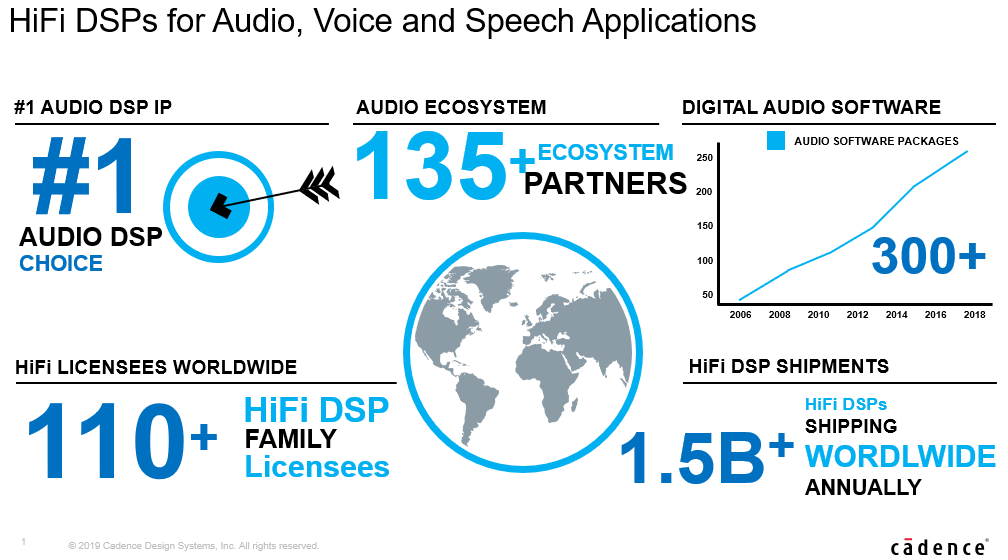
It seems every day we see a new article (or ten) on autonomous driving. It is an especially hot topic, and it will happen someday. For now, we can dream about it, and many people are working on it. But for the present, the technology in a car that commands my attention is audio. I’ve been a musician since 4th grade. I still perform occasionally today. I love all types of music. And the one time I can listen to whatever I want is when I am alone in the car. So, when I attended Cadence’s Automotive Design Summit the end of July, the session titled, HiFi DSPs for Automotive Infotainment, had my full attention. Larry Przywara, Cadence’s Product Line Group Director Audio/Voice IP, Tensilica Products, who works in the Cadence IP Group, gave the presentation. So, thank you, Larry, you made my day!
If you live in Silicon Valley, you know we are in our cars a lot. I try to stay off the cell phone, but I need to stay connected. I use CarPlay for that. A feature we didn’t even dream about ten years ago. While I was happy when higher fidelity sound first started appearing in cars (e.g., DTS, DVD-A, etc.), many cars no longer support physical media at all. My phone has over 16GB of music on it, why should I need to fumble with a disc? So, today’s infotainment system needs to support many audio sources including Bluetooth, AM, FM, Digital Radio (HD Radio, DAB, DAB+, DRM…), CarPlay, Android Auto, Sirius XM, MP3 from hard disk, and the list keeps growing. Most importantly, Cadence HiFi licensees, of which there are well over one hundred, can get support for any the digital terrestrial and satellite radio audio standards because they are all supported on the HiFi Audio DSP.
The presentation also pointed out the new advanced audio/voice features that will be coming to our cars very soon can all be supported on Tensilica HiFi DSPs. These new features include advanced noise cancellation to eliminate road and engine noise, improved speech recognition, audible directional warnings to let us hear the direction we need to be concerned about and even improved in-cabin communications. In-cabin communications? What’s this? Well, today’s SUV drivers need to shout to be heard in the back row – but what if the car could pipe that voice back to the back row for you instead, no shouting needed? Or, how do you like this feature, “sound bubbles”? The adult driver relaxes to soft jazz, while the kids are watching a movie in the back, and the front row passenger is listening to their favorite podcast – and none of them hear the other’s content. Wow, that sounds nice! The power of Tensilica’s DSP technology will be doing all of it.
If you want a real-life example for the over 100 HiFi licensees, look no further than the Samsung Exynos Auto V9 automotive processor. While the chip does employ Arm processors for some of the infotainment features, the audio portion is four Tensilica HiFi 4 DSPs, as seen here. DSP architectures are more suitable for presenting audio and for speech recognition. The advantage of using DSPs is due in part to the low latency characteristics of DSPs, and the high performance of Tensilica DSPs in particular.

Finally, as with any DSP core, you need to have the proper software available as well. Indeed, Cadence’s list of 3rd-party Automotive Partners is impressive and complete. No matter which audio features the car manufacturer, or infotainment OEM wants to provide – a complete HiFi solution will be available.
“Sorry Honey, I guess I will be getting a new car again soon…”
Share this post via:





Comments
There are no comments yet.
You must register or log in to view/post comments.